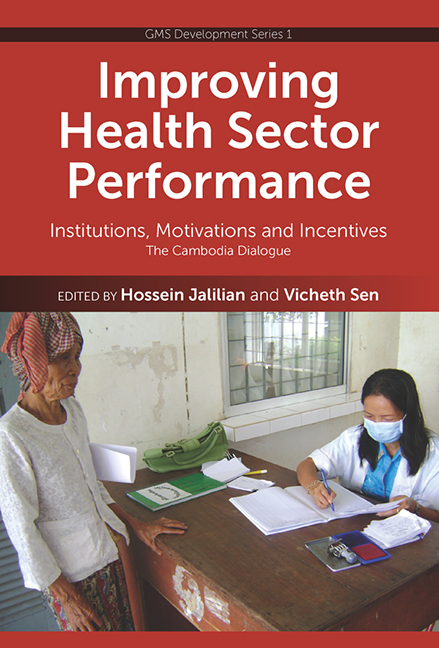 Improving Health Sector Performance
Improving Health Sector Performance from Part III - Optimal Health Workers Contracts
Published online by Cambridge University Press: 21 October 2015
INTRODUCTION
Indonesia is an archipelago of some 17,000 islands spread over 1.9 million sq km, with a total population of 230 million. Administratively, it is divided into thirty-three provinces and some 500 districts. These in turn are divided into subdistricts. Per capita GDP is US$3,310, placing the country among lower middle-income countries. Total expenditures on health are US$87 per capita, which is about 4.4 per cent of GDP, low by international standards (World Bank 2009). Public spending represents some 75 per cent of total health spending.
The network of health services currently consists of at least one health centre (puskesmas) in each subdistrict, headed by a doctor. The target is to provide one puskesmas for 30,000 people. The puskesmas is supported by subcentres, usually headed by nurses. Health centres provide outreach to underserved areas. In villages, integrated Health Posts provide preventive services and health promotion. The posts are established and managed by the community with the assistance of health centre staff. To promote maternal and child health, midwives are being deployed to the villages. The referral system consists of district and provincial hospitals, and, at the pinnacle, tertiary teaching hospitals.
The government policy, as reflected in its strategic five-year plans for the health sector (the last being the 2005–09 plan, and now a new plan covering 2010–14), is to improve access to and quality of health services, especially for the poor. Key policy elements are improving the number and distribution of health workers. The number of health workers is still low compared with other countries in the region at 18 doctors per 100,000 population; the figures of 50 midwives per 100,000 and 62 nurses per 100,000 are better. The number of health workers has risen steadily over time, especially in recent years, when there has been a sharp increase in graduates from medical schools, as well as midwifery and nursing schools. The increase in graduate numbers has been accompanied by an increase in the number and distribution of educational facilities, especially private ones. Schools can now be found in almost all provinces. While the growth in local institutions may have facilitated health worker availability in “less desirable” places, it has also raised concerns about the quality of graduates, and central authorities are now seeking to harmonize accreditation and certification of schools.
To save this book to your Kindle, first ensure [email protected] is added to your Approved Personal Document E-mail List under your Personal Document Settings on the Manage Your Content and Devices page of your Amazon account. Then enter the ‘name’ part of your Kindle email address below. Find out more about saving to your Kindle.
Note you can select to save to either the @free.kindle.com or @kindle.com variations. ‘@free.kindle.com’ emails are free but can only be saved to your device when it is connected to wi-fi. ‘@kindle.com’ emails can be delivered even when you are not connected to wi-fi, but note that service fees apply.
Find out more about the Kindle Personal Document Service.
To save content items to your account, please confirm that you agree to abide by our usage policies. If this is the first time you use this feature, you will be asked to authorise Cambridge Core to connect with your account. Find out more about saving content to Dropbox.
To save content items to your account, please confirm that you agree to abide by our usage policies. If this is the first time you use this feature, you will be asked to authorise Cambridge Core to connect with your account. Find out more about saving content to Google Drive.